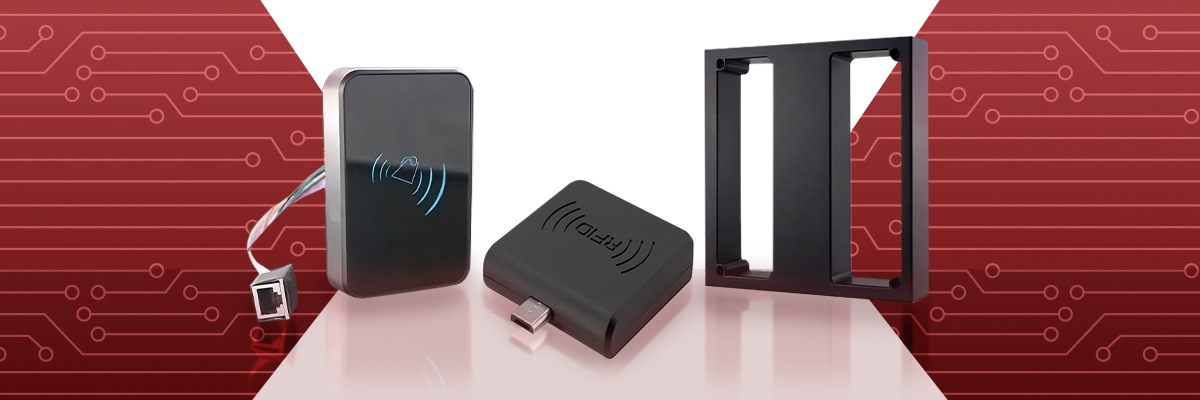LF RFID Reader Design and Components
Low Frequency (LF) RFID readers, operating typically at 125 kHz or 134.2 kHz, comprise various electronic, mechanical, and software components that ensure robust functionality and reliability. The core of an LF RFID reader consists of a printed circuit board (PCB), microcontrollers, transceivers, and antenna circuitry. The PCB houses integrated circuits that manage signal modulation, demodulation, and data transfer. Microcontrollers handle logic processing, coordinating communication between tags and the reader. The antenna, usually made from copper or aluminum coils, is key in generating electromagnetic fields that power the passive RFID tags and allow data transmission.
Mechanical components, such as housing and shielding, protect the electronic elements from environmental factors and electromagnetic interference (EMI), ensuring stable performance in industrial and commercial settings. Quality housing materials, such as polycarbonate or metal, often provide durability and resistance to harsh environments, making the readers suitable for applications in manufacturing plants, supply chains, and research institutions.
From a software perspective, an LF RFID reader requires firmware to manage data processing and communication protocols, often following ISO 11784/11785 standards. Embedded software within the reader typically supports the decoding of tag information and secure communication with back-end systems via industry-standard protocols such as TCP/IP, RS232, or USB.
Working Principles and Internal Components
LF RFID readers operate on the principle of inductive coupling. The reader generates an electromagnetic field through its antenna, energizing passive RFID tags within the field. These tags, in turn, modulate the field to transmit their data back to the reader. For instance, the antenna circuit generates and modulates the LF signal, while the microcontroller processes the tag’s unique identification number (UID) before sending it to the host system.
A typical LF RFID reader might contain a 125kHz transceiver capable of converting digital data into electromagnetic signals and a power management unit to regulate power distribution across various internal components. Another key component could be the EMI shielding that reduces interference, ensuring clear communication between the reader and multiple tags in cluttered environments like warehouses.
Connections and Interfaces
LF RFID readers come with multiple connection interfaces to ensure seamless integration into existing infrastructures. Common ports include RS232, RS485, USB, and Ethernet, enabling the reader to connect to PCs, PLCs, or other networked devices. Some readers also support wireless communication, such as Bluetooth or Wi-Fi, for remote monitoring and data collection. Additionally, most LF RFID readers support GPIO (General-Purpose Input/Output) ports, allowing integration with external sensors or control systems in complex automated setups.
Industry Standards and Regulatory Compliance
LF RFID readers must comply with several industry standards and regulations in the U.S. and Canada. The readers are generally built to adhere to the ISO 11784/11785 standards, which govern the transmission of RFID signals for animal identification, asset tracking, and other purposes. FCC Part 15 regulations govern electromagnetic emissions in the U.S., while Industry Canada (IC) regulations set similar guidelines for use within Canada. Compliance with these regulations ensures the safe, legal operation of the readers and limits their interference with other devices. GAO RFID ensures its products meet these standards to deliver secure, reliable performance.
Quality Assurance and Testing
GAO RFID employs a stringent quality assurance process, including rigorous testing in real-world environments to ensure performance consistency and reliability. Every LF RFID reader undergoes a series of functional tests, such as range testing, signal integrity, and environmental resilience, to ensure that it meets industry specifications. Testing for electromagnetic compatibility (EMC) is also crucial, ensuring that the reader does not emit unwanted interference or suffer from it when operating alongside other electronic equipment.
Our team is committed to continuous R&D to ensure that our LF RFID readers meet evolving industry needs and deliver superior performance. We support our customers through expert consultation, whether remotely or onsite, providing both pre-sales and post-sales technical support.
Our products are in stock and can be shipped overnight to Continental U.S. and Canada from one of our local warehouses. If you have any questions, our technical experts can help you. Please fill out this form or email us.

